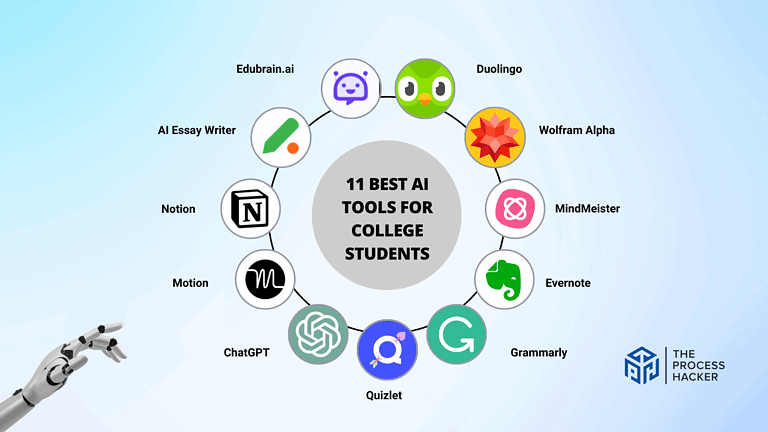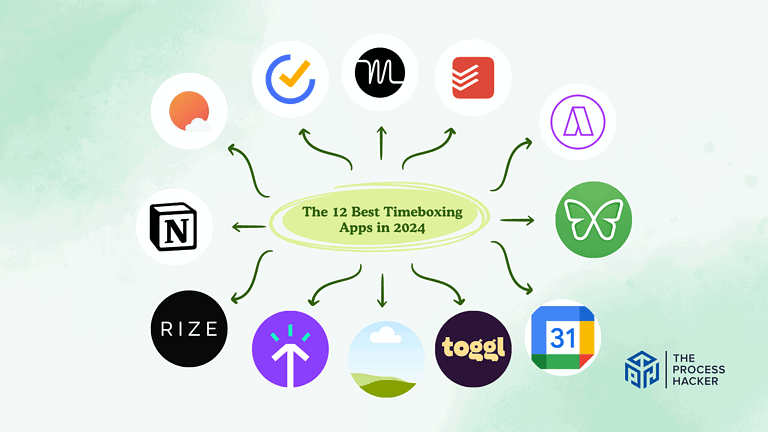What is Logistics Management Software: Revolutionizing Supply Chains
Have you ever stared at a never-ending sea of invoices, shipments, orders, and expenses, wondering how on earth you will get it all under control?
As the head of your thriving small business, there just never seem to be enough hours in the day to properly track shipments, coordinate your suppliers, keep customers updated, and maximize operational efficiencies.
But what if I told you there was a way to bring order to the chaos and revolutionize your entire supply chain management process? Introducing logistics management software – the one tool that could transform your logistics operations and save you valuable time, money, and sanity all at once.
In this post, we’ll examine how logistics management software streamlines your supply chain from start to finish. From automated purchase ordering and inventory control to intelligent route planning and real-time shipment tracking, I’ll explain exactly how it can supercharge your distribution operations. We’ll also discuss the top features to look for, potential cost savings, and ROI. By the end, I guarantee you’ll be ready to take your logistics to the next level. Let’s dive in!
What is Logistics Management Software?
The industry of logistics software has developed into an essential part of supply chain coordination and integration. This change was brought about by the automation of logistical operations and the skillful analytical dissection of client pleasure.
Logistics management software is not just about meeting customers’ demands. It also plays a crucial role in integrating with other organizational tasks to accomplish more general corporate objectives.
This software ensures seamless integration with your business operations by carefully planning the flow of products, services, and information along a supply chain and efficiently controlling inventory, warehouses, transportation, and order fulfillment. It is a versatile and adaptable solution.
Software for logistics management is a collection of technologies designed to improve company operations from start to finish. It enhances client order delivery, inventory control, order processing, and possible returns.
Implementing the best logistics management software has benefits, including improved customer satisfaction and timely, accurate customer service. Also, logistics software development services offer reduced costs, more supply chain insight, and more efficient logistical methods.
What are the Benefits of Implementing Advanced Logistics Management Software?
The use of logistics software optimizes the whole logistics process cycle, which also improves the bottom line in the following ways:
Enhance Operational Efficiency
One of the most immediate and impactful benefits of LMS is the boost it gives to operational efficiency. No more relying on spreadsheets and manual processes – LMS brings everything together in one centralized platform. You’ll be able to track shipments, manage inventory, and optimize routes with ease. This not only saves you time and money but also reduces the risk of errors and delays.
Let’s be honest, the world of logistics is complex. But with the right LMS in place, you’ll be able to navigate it with confidence and achieve the kind of results that truly set your business apart.
Reduce Human Inaccuracy
The human aspect greatly impacts a firm’s operations. People might make errors, be irresponsible, or provide poor customer service.
Developing logistic software allows for the optimization of inventory management and real-time handling of shipping scenarios.
Automation of Workflow
Once you have the documentation for your business, you may enter it into the logistics program. You will undoubtedly have total control over the system. Machine learning makes searching for the necessary papers simpler.
Digital solutions can streamline document management, resolve inquiries, monitor payments, and eliminate time-consuming manual tasks.
Improve Supply Chain Visibility
In the past, customers would schedule shipments and then wait to hear back by phone. Thanks to modern technologies, customers may see the tracking information and shipping status of their orders at any time.
Using tracking software, a business may monitor both internal and external activities to ensure its goals are reached and to build open communication with all chain members.
Lower Expenses
Logistics software may save your company money on a number of costs. Thanks to the system’s precise calculations, you can see instances when money is spent more than is required, places where you may save expenses, locations where you can discover better prices on items, etc.
Additionally, you may save expenses by reducing documentation, removing human error, and using resources and routes more effectively.
Resource Allocation
With logistics software, you can control and manage logistical capacity. You’ll be able to monitor things like whether using your car for deliveries or other forms of transportation is suitable.
Using car monitoring technology, logistics software may help managers investigate the workload of drivers and the causes of delays.
Boost Customer Satisfaction
At the end of the day, happy customers are what it’s all about. LMS plays a critical role in ensuring your customers get what they want when they want it. By optimizing routes, managing inventory, and providing real-time tracking, you can deliver a seamless experience that exceeds expectations. Fewer delays, fewer errors, and more on-time deliveries translate to happier customers and increased loyalty.
In today’s competitive landscape, customer satisfaction is king. LMS empowers you to deliver an exceptional experience that not only meets but exceeds customer expectations. It’s about building trust, fostering loyalty, and ensuring your business thrives in the long run.
What are the Key Features of Logistics Management Software?
For the best outcomes, consider the following logistics management software features when choosing logistics management software:
Order Processing and Warehouse Management Systems
An organization’s stock should be optimized with the direct assistance of solid logistics management software to raise overall warehouse operations efficiency. This will help quickly and affordably meet changing warehousing needs.
Furthermore, having a centralized business system always helps since operations managers focus heavily on order and billing management. More flexibility in handling ad hoc needs is also advantageous to manufacturers.
Inventory Management and Tracking
Most manufacturers focus all of their energy on maximizing inventory levels. This guarantees that the company has the capacity to store the right amount of items and raw materials in stock and that they are ready for use whenever needed.
Manufacturers may use real-time tracking tools with the finest logistics management software to ensure constantly optimized inventory levels, which will lead to the right flow of products.
A built-in inventory management software solution and control tool in the program may also guarantee simplicity of processing and on-time delivery of the invoice to the client.
Transportation Management and Route Optimization
Transportation costs can eat into your profits, and inefficiencies in this area can lead to delays and customer dissatisfaction. Robust logistics management software tackles these challenges head-on with a range of powerful features:
- Carrier Selection & Management: Find the best carriers for your needs, negotiate rates, and manage all your carrier relationships in one place.
- Load Planning & Optimization: Maximize truck space and minimize costs with intelligent load planning algorithms.
- Route Optimization: Say goodbye to manual route planning. The software uses real-time traffic data and other variables to calculate the most efficient routes, saving time and fuel.
- Shipment Tracking: Get real-time visibility into the location of your shipments, so you always know where your goods are.
- Proof of Delivery: Ensure successful deliveries with electronic proof of delivery and automated notifications.
With these advanced transportation management and route optimization features, you’ll gain greater control over your logistics operations. You’ll be able to reduce costs, improve on-time deliveries, and provide a superior customer experience. It’s a win-win situation for both your business and your customers.
Predicting
For most firms, a logistics management software with solid forecasting capabilities is the best option. By using precise forecasting, businesses may avoid the risk of overstocking or understocking inventory by only purchasing what is really needed.
Customer satisfaction rises with optimal forecasting efficiency, and bottlenecks in the operations cycle are removed.
Integration of Finance and Accounts
The financial and accounting components of the supply chain should work with the finest logistics management software. It must easily connect with all important elements, including account payables and receivables, general ledger features, expenses, receipt data, etc.
This supports the organization’s account payables and receivables, general ledger operations, and accurate accounting.
Analytics and Visibility in Real Time
Real-time visibility and monitoring of goods flow across many checkpoints are one of the most important logistical components.
It is always advisable to choose logistics management software that offers complete supply chain visibility. In a similar vein, the software needs to be able to assess current and real-time data to assess company procedures and supply chain performance in order to maximize operations.
What are the Types of Logistics Management Software Solutions?
Off-the-Shelf vs. Custom Software
Here’s a table that compares the advantages and disadvantages of off-the-shelf and custom logistics management software:
| Feature | Off-the-Shelf Software | Custom Software |
|---|---|---|
| Advantages | – Cost-effective – Quick deployment – Proven reliability and stability | – Tailored to specific business needs – Integrates seamlessly with existing business processes |
| Disadvantages | – May not fully meet specific needs – Potential functionality gaps | – Higher initial operational costs – Longer deployment times |
This table helps you weigh the benefits and limitations of each option, enabling you to make an informed decision based on your specific business requirements and goals.
Cloud-Based vs. On-Premise Solutions
Here’s a table that outlines the pros and cons of cloud-based versus on-premise solutions:
| Feature | Cloud-Based Solutions | On-Premise Solutions |
|---|---|---|
| Advantages | – Scalability: Easy to scale up or down based on needs – Cost-Effective: Lower upfront costs, pay-as-you-go pricing models – Accessibility: Accessible from anywhere with internet connectivity – Maintenance: Provider handles maintenance and updates | – Control: Full control over the infrastructure and data – Customization: Greater potential for customization – Performance: Potentially faster response times as data does not need to travel over the internet |
| Disadvantages | – Dependency on Internet: Requires a stable Internet connection – Less Control: Reduced control over physical hardware and data storage – Security Concerns: Perceived increased risk of data breaches (depending on the provider) | – Cost: Higher initial costs for hardware and setup – Maintenance: Requires in-house IT staff for maintenance – Scalability: More challenging to scale quickly |
This table highlights the key differences between cloud-based and on-premise solutions, allowing you to evaluate which option better aligns with your operational requirements and strategic objectives.
How Do You Choose & Implement Your Logistics Management System?
Choosing and implementing the right logistics management software is a pivotal decision that can significantly influence your operational efficiency and overall success. When you’re ready to select logistics management software, it’s essential to approach the process systematically to ensure the solution aligns with your specific requirements and goals.
Steps for Choosing the Right Software
- Assess Your Needs: Begin by evaluating your current processes and identifying areas where you need improvement. Consider what specific logistics challenges you face and what features will most effectively address those issues.
- Set a Budget: Determine how much you’re willing to invest in a software solution. Remember, your budget should reflect not only the purchase price but also ongoing costs for maintenance, training, and potential upgrades.
- Research Potential Solutions: Look at different options available on the market. Read reviews, watch demos, and ask peers in your industry for recommendations. This research will help you narrow down your choices to those that best fit your needs.
- Evaluate Features and Compatibility: Make sure the software you consider can integrate smoothly with your existing systems. List the features each option offers and check how they align with your identified needs.
- Request Proposals and Test Demos: Once you have a shortlist, request detailed proposals from the vendors. If possible, arrange for a demo to see the software in action. This step is crucial for understanding how the software works and how intuitive it is for you and your team.
- Check Vendor Support and Community: Investigate the support each vendor offers. Reliable customer support can be invaluable, especially during the initial implementation phase. Also, consider the community around the software: a vibrant user community can provide additional support and resources.
- Make Your Decision: After thorough evaluation, choose the software that best matches your requirements, within your budget, and promises the most reliable support.
- Plan the Implementation: Develop a detailed plan for implementation. This should include a timeline, training schedules for your team, and a phase-wise rollout, if applicable.
- Monitor and Evaluate: After implementation, closely monitor the system’s performance and gather feedback from your team. Use this information to make necessary adjustments and optimize the software’s effectiveness.
By following these steps, you can ensure that you choose a logistics management software that not only meets your current needs but also scales with your business as it grows.
Steps for Successful Integration
Once you’ve chosen the perfect logistics management software, it’s time to focus on seamless integration into your existing operations. This phase is crucial for maximizing the benefits of your new tool and ensuring a smooth transition for your team.
- Data Migration: Transferring your existing data to the new system is a critical first step. Ensure data accuracy and completeness during this process to avoid any disruptions in your workflow.
- Team Training: Provide comprehensive training to your team members on how to use the new software effectively. This will empower them to leverage its features and functionalities to their full potential.
- Change Management: Implementing new software often involves changes in processes and workflows. Communicate these changes clearly to your team and address any concerns they may have.
- Testing and Refinement: Before fully deploying the software, conduct thorough testing to identify and resolve any potential issues. This will ensure a smooth launch and minimize disruptions to your operations.
- Ongoing Support: Partner with your software provider to ensure ongoing support and maintenance. This will help you address any technical issues promptly and keep your system running optimally.
Successful integration requires careful planning and execution. By following these steps and maintaining open communication with your team, you can ensure a smooth transition and maximize the benefits of your new logistics management software.
Overcoming Common Implementation Challenges
While the benefits of logistics management software are clear, the implementation process can present certain challenges. However, with proactive planning and a clear strategy, you can navigate these obstacles and ensure a successful rollout.
1. Resistance to Change: It’s natural for some team members to be hesitant about adopting new technology. Address this by communicating the benefits of the software, providing ample training, and involving key stakeholders in the implementation process.
2. Data Integration Issues: If your existing data is scattered across multiple systems, consolidating and migrating it to the new software can be complex. Work closely with your software provider to ensure a smooth data transfer and address any compatibility issues.
3. Unexpected Costs: Hidden costs can sometimes arise during implementation, such as customization fees or additional training requirements. Set a realistic budget and build in a contingency for unexpected expenses.
4. User Adoption: Even with the best training, some team members may struggle to adapt to the new software. Provide ongoing support and encourage feedback to ensure everyone feels comfortable and confident using the system.
5. Technical Glitches: Despite thorough testing, technical glitches can occur during implementation. Have a plan in place to address any issues promptly and minimize disruptions to your operations.
Implementation is a collaborative effort. Proactively addressing potential challenges and fostering a culture of open communication can ensure a successful transition to your new logistics management software and reap its full benefits.
Future Trends in Logistics Management Software
As technology advances at a breakneck pace, the future of logistics management software promises to be nothing short of transformative. We’re on the cusp of a new era where efficiency, visibility, and sustainability will be redefined. Let’s explore some of the most exciting trends shaping the future of logistics management software.
AI and Machine Learning in Logistics
Artificial intelligence and machine learning are poised to revolutionize the logistics landscape. Imagine predictive analytics that anticipate demand fluctuations, optimize routes based on real-time traffic conditions, and identify potential disruptions before they occur. AI-powered systems can even automate routine tasks, freeing up your team to focus on strategic initiatives.
IoT and Real-Time Tracking Advancements
The Internet of Things (IoT) is set to bring unprecedented visibility to your supply chain. With IoT sensors embedded in shipments, vehicles, and warehouses, you’ll have access to real-time data on location, temperature, humidity, and more. This level of transparency will enable you to make proactive decisions, ensure product integrity, and enhance customer satisfaction.
The convergence of these and other emerging technologies will usher in a new era of intelligent logistics management. As software solutions become more sophisticated, they will empower you to streamline operations, reduce costs, and deliver exceptional service to your customers. Stay ahead of the curve by embracing these innovations and positioning your business for success in the dynamic world of logistics.
Final Thoughts on Logistics Management Software
Logistics management software has proven to be an integral tool for businesses of all sizes in improving their supply chain performance.
From streamlining operations and reducing costs to providing real-time insights and enhancing customer satisfaction, this software offers a multitude of benefits that can have a significant impact on a company’s bottom line. As we have seen throughout this blog post, the role of logistics management software cannot be underestimated in today’s fast-paced and competitive business landscape.
Therefore, it is imperative for businesses to evaluate their own logistics needs and consider implementing such software into their operations. Don’t let your supply chain fall behind the times – take action now and see the positive effects on your business!
With advanced technology continuously shaping the future of supply chain management, there is no better time to invest in a reliable and efficient logistics management system. So don’t wait any longer, join the countless successful companies who have already reaped the benefits and revolutionize your supply chain with logistics management software today.
Your customers will thank you, and your bottom line will thank you too!







